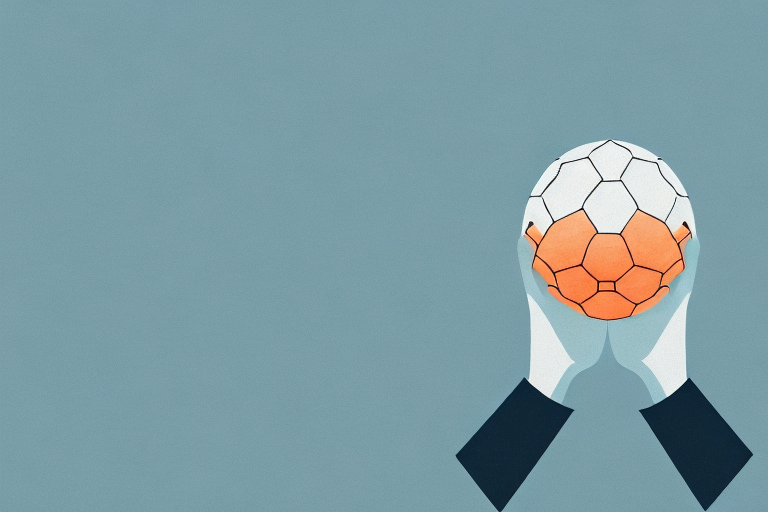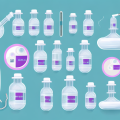If you suffer from trigger point jaw pain and are looking for a way to alleviate your discomfort, you may want to consider using a ball. While there are many conventional treatments available for this condition, some people prefer to try self-treatment methods before seeking professional help. In this article, we will explore the causes and symptoms of trigger point jaw pain, how a ball can help relieve it, what kind of ball to use, and how to use it safely and effectively.
Understanding Trigger Point Jaw Pain: Causes and Symptoms
Trigger point jaw pain is a type of pain that often occurs in the jaw joint and surrounding muscles. It is caused by tight knots or trigger points in the muscles, which can be the result of a variety of factors such as stress, poor posture, grinding/clenching of teeth, and injury. Common symptoms include pain or tenderness in the jaw, headaches, difficulty chewing, clicking/popping sounds when opening or closing the mouth, and ear pain.
In addition to the aforementioned causes and symptoms, trigger point jaw pain can also be a result of temporomandibular joint disorder (TMJ). TMJ is a condition that affects the jaw joint and muscles that control jaw movement. It can cause pain and discomfort in the jaw, face, and neck, as well as difficulty opening and closing the mouth. If you are experiencing any of these symptoms, it is important to consult with a healthcare professional for proper diagnosis and treatment.
How a Ball Can Help Relieve Trigger Point Jaw Pain
Using a ball to massage the muscles around your jaw can help to alleviate the pain and discomfort associated with trigger point jaw pain. By applying gentle pressure to these muscle knots, the ball can help to release tension and promote relaxation. It can also stimulate blood flow to the area, which can help to reduce inflammation and promote healing.
In addition to using a ball to massage the muscles around your jaw, incorporating jaw exercises into your daily routine can also help to relieve trigger point jaw pain. These exercises can include opening and closing your mouth slowly, moving your jaw from side to side, and gently stretching your jaw muscles. By regularly practicing these exercises, you can help to strengthen your jaw muscles and reduce the likelihood of trigger point pain occurring in the future.
Choosing the Right Ball for Self-Treatment of Trigger Point Jaw Pain
When it comes to choosing a ball for self-treatment of trigger point jaw pain, there are a few different options to consider. Some people find that a tennis ball or lacrosse ball works well, while others prefer a specialized ball designed for trigger point therapy. It’s important to choose a ball that is firm enough to provide adequate pressure, but not so hard that it causes discomfort or pain. Experiment with different options to find the one that works best for you.
It’s also important to consider the size of the ball you choose. A smaller ball may be more effective for targeting specific trigger points, while a larger ball may be better for covering a larger area of the jaw. Additionally, some people find that using a ball with a textured surface, such as a spiky massage ball, can provide additional relief by stimulating blood flow and breaking up muscle tension. Ultimately, the best ball for self-treatment of trigger point jaw pain will depend on your individual needs and preferences.
Step-by-Step Guide to Using a Ball for Self-Treatment of Trigger Point Jaw Pain
When using a ball to treat trigger point jaw pain, it’s important to follow a few basic steps to ensure that you are doing it safely and effectively. First, find a comfortable and quiet space where you can focus on the treatment. Using your hands to support your head, place the ball on a trigger point in the muscles around your jaw. Slowly roll the ball over the area, applying gentle pressure as needed. Hold the ball on any particularly tender spots for a few seconds before moving on to the next area.
It’s important to note that while self-treatment with a ball can be effective for managing trigger point jaw pain, it should not be used as a substitute for professional medical advice or treatment. If your pain persists or worsens, it’s important to seek the advice of a healthcare professional. Additionally, it’s important to use a ball that is appropriate for your level of pain and sensitivity, as using a ball that is too hard or too soft can be ineffective or even cause further discomfort.
Tips and Tricks for Effective Self-Treatment of Trigger Point Jaw Pain with a Ball
There are a few tips and tricks that can help to make your self-treatment of trigger point jaw pain with a ball more effective. For example, you may want to use the ball in conjunction with other therapies such as hot/cold therapy or stretching exercises. You may also find that it’s helpful to use the ball regularly, as opposed to only when the pain flares up. Finally, be patient with yourself and the process – it may take some time and experimentation to find the right technique for you.
Possible Risks and Precautions When Using a Ball for Self-Treatment of Trigger Point Jaw Pain
While using a ball for self-treatment of trigger point jaw pain is generally considered safe, there are a few precautions to keep in mind. For example, don’t use the ball if you are experiencing severe pain or if you have any underlying medical conditions that could be exacerbated by the treatment. Additionally, be gentle and mindful of your body’s limitations – don’t push through any pain or discomfort.
Combining Ball Therapy with Other Techniques for Managing Trigger Point Jaw Pain
While using a ball can be an effective way to manage trigger point jaw pain, it is often most effective when used in combination with other techniques. Some people find that stretching exercises or meditation can help to alleviate stress and tension in the jaw muscles, while others benefit from the application of heat or cold to the area. It’s important to experiment with different approaches to find the combination that works best for you.
Success Stories: Real People Share How They Used a Ball to Treat Their Trigger Point Jaw Pain
There are many success stories out there from people who have used a ball to treat their trigger point jaw pain. For example, one woman found that using a specialized trigger point ball helped to relieve her pain and improve her overall quality of life. Another man credits his regular use of a lacrosse ball for helping him to avoid surgery for his jaw pain. These success stories serve as proof of the effectiveness of this self-treatment method.
Conclusion: The Benefits and Limitations of Self-Treatment of Trigger Point Jaw Pain Using a Ball
In conclusion, using a ball to treat trigger point jaw pain can be an effective and affordable self-treatment method. By understanding the causes and symptoms of the condition, choosing the right ball, and following a safe and effective technique, many people find relief from their pain and discomfort. However, it’s important to remember that this self-treatment method does have limitations – if your pain persists or worsens, it’s always a good idea to seek professional help.





